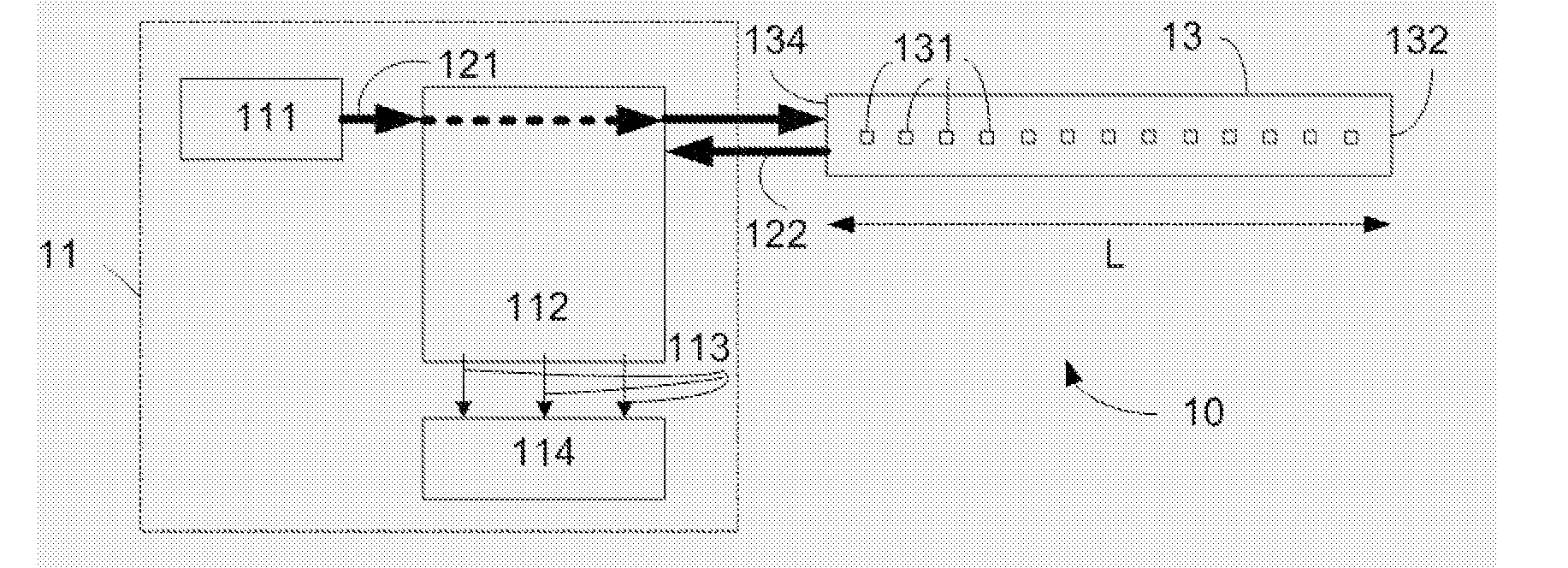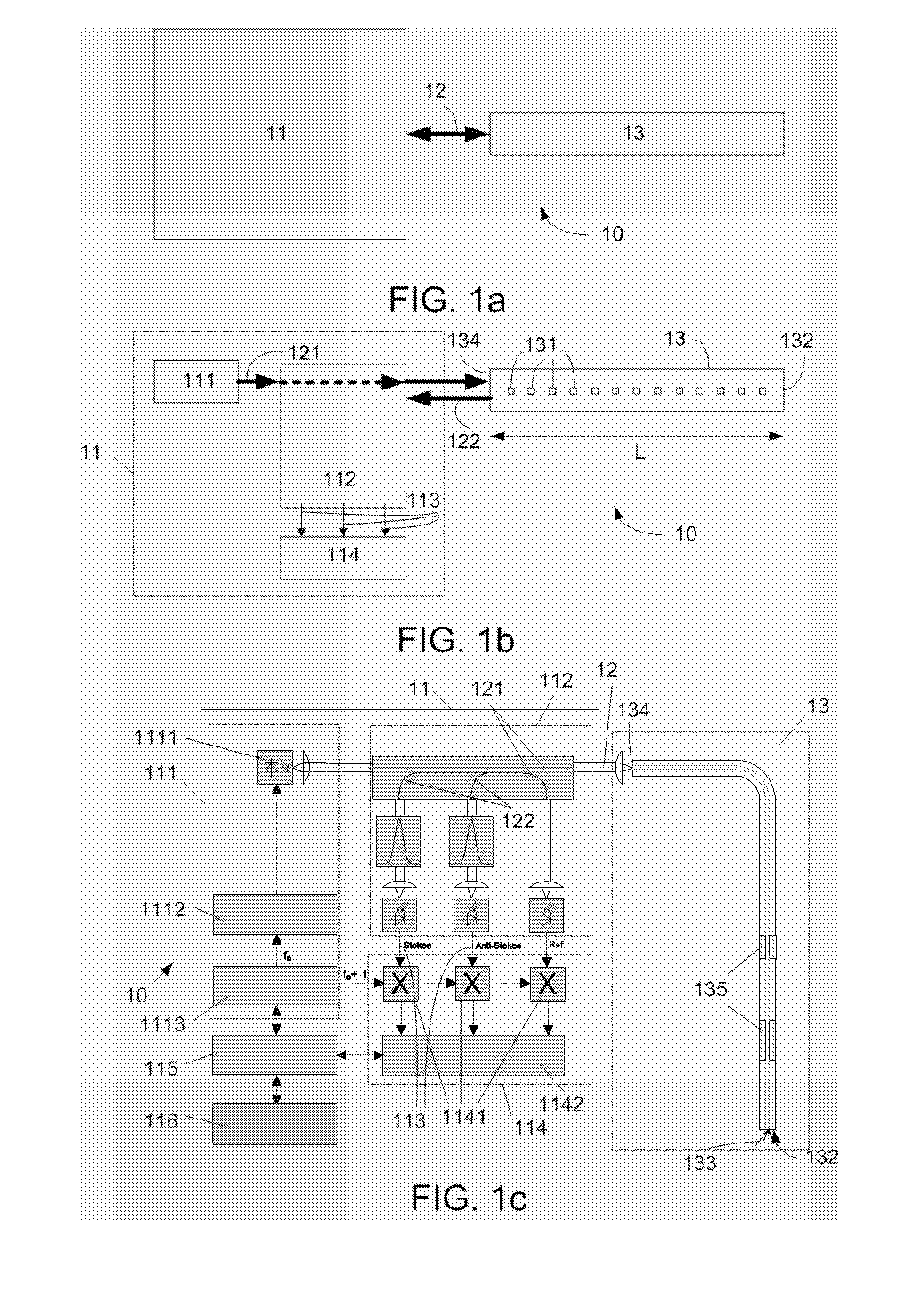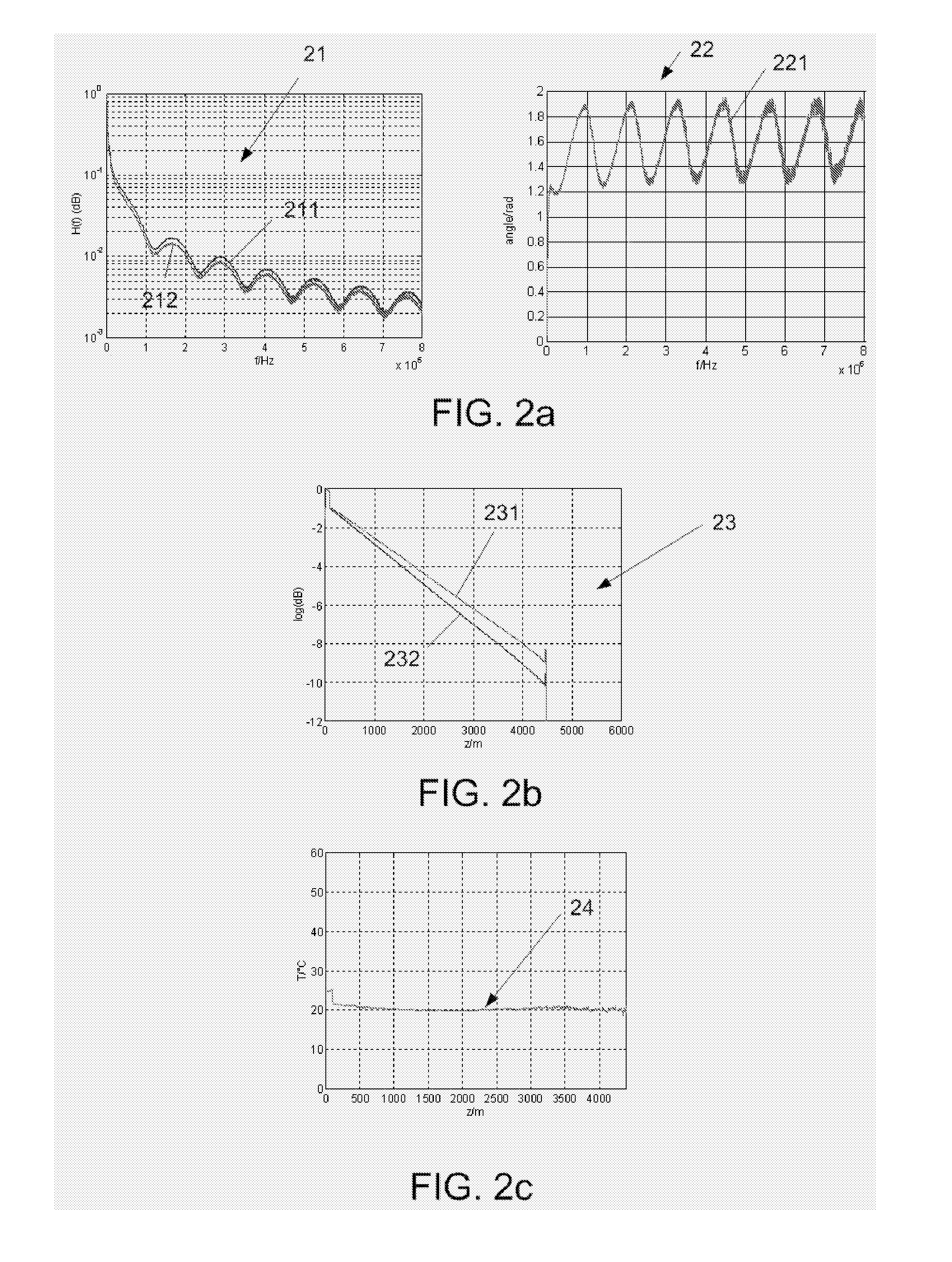Calibrating An Optical FMCW Backscattering Measurement System
- Summary
- Abstract
- Description
- Claims
- Application Information
AI Technical Summary
Benefits of technology
Problems solved by technology
Method used
Image
Examples
example 1
[0217]FIG. 9 shows an example of a preferred combination of calibration procedures.
[0218]In an embodiment, the method of calibration comprises the following steps which are part of an automated calibration procedure made in software in a DSP of the measurement system:
Step 1: Crosstalk Compensation
[0219]To eliminate crosstalk the crosstalk is determined with a specific measurement procedure (cf. section 8) during system manufacture. The results of measurement are memorized into the dedicated system. Within each measurement cycle in normal operation the memorized crosstalk is subtracted from the measured complex frequency data.
Step 2: Phase-Offset-Correction
[0220]The phase-offset can be determined by linear approximation (cf. section 4) during system manufacture or as online measurement within each measurement cycle in normal operation. The slightly error-prone result of the approximation is improved by a second correction factor determined with the automated system calibration applyi...
example 2
[0226]With reference to the problems of the prior art mentioned in the section ‘Background art’ above (points a)-e)), the following example discusses solutions to those problems in the framework of the present invention.
a) DC-Errors:
[0227]a1) Difficulty of determining the value of the backscattering signal at fm=0 (DC value).
a2) The DC value dependent on sensor properties.
[0228]a1) and a2) are compensated by the automated DC-correction procedure (cf. section 3 above), which is a measurement procedure, additionally using a correction factor determined by a linearization procedure called automatic system calibration (cf. section 5 above) applying criteria related to noise characteristics in the backscattering curves. To determinate the DC value exactly, the DC-correction procedure uses the results of the linearization procedure to eliminate residual error.
b) Errors Due to Tolerances and Nonlinear Behaviour of Optic and Electronic Components.
[0229]b) is compensated by the phase offset ...
PUM
 Login to View More
Login to View More Abstract
Description
Claims
Application Information
 Login to View More
Login to View More - R&D
- Intellectual Property
- Life Sciences
- Materials
- Tech Scout
- Unparalleled Data Quality
- Higher Quality Content
- 60% Fewer Hallucinations
Browse by: Latest US Patents, China's latest patents, Technical Efficacy Thesaurus, Application Domain, Technology Topic, Popular Technical Reports.
© 2025 PatSnap. All rights reserved.Legal|Privacy policy|Modern Slavery Act Transparency Statement|Sitemap|About US| Contact US: help@patsnap.com



